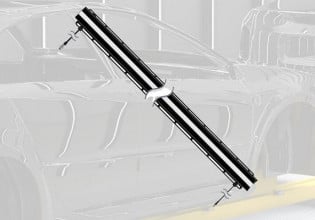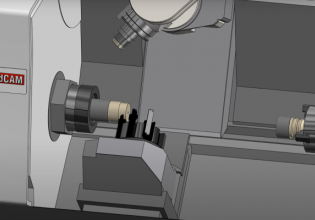Toyota and Partners Develop New Solutions to Increase Motor Efficiency on the Factory Floor
Motors are one of the biggest loads for electrical energy used in manufacturing operations. How are these companies working to increase motor efficiency?
In manufacturing, motors are one of the biggest loads for electrical energy. Besides manufacturing, motors are used in virtually all electrified buildings, running fans for climate controls, compressors for refrigerators, servos for motion control, and so on.
While many countries are working towards green energy and reducing carbon emissions as a long-term goal, several Japanese countries are reducing their dependence on electrical energy. Much of the energy used by a motor is converted to losses in the magnets and heat. Neither of these is useful to the throughput of the factory.
Daikin Industries and Toyota Motor are two companies in the race to create more efficient use of energy in motors and other systems in industrial facilities.
Daikin Industries Develops a Software Solution
Daikin Industries specializes in air conditioning. Their products are widely used in residential, commercial, and industrial spaces. They are designing their air handling systems to reduce electricity waste, which will translate to worldwide energy usage reduction.

Daikin Industries air handling units on a large industrial facility. Image used courtesy of Daikin Industries
For small applications, some motors simply use a potentiometer to add resistance in series with the motor. This means less voltage is applied to the motor, and it turns more slowly. However, the potentiometer simply converts electrical energy to heat, which is inefficient and does not scale up to industrial motors.
To optimize the energy usage and suit the particular motor’s startup and operations, most industrial motors use a variable frequency drive (VFD) motor controller.
These motor controllers vary the input frequency or the voltage to the motor. By varying these parameters, the speed of the motor can be controlled, meaning startups are smooth and inrush currents are reduced. Ultimately, the motor can be run at the proper speed for operation by only applying the necessary signal to the motor.
Daikin goes a step further. They have developed software that will adjust the voltage and frequency very quickly, making changes on the order of tens of microseconds. This is significantly faster than a standard VFD.
Everyone is familiar with the controller that lags too far beyond the set point; the thermostat that clicks on after it is far too cold in the room but then runs until far too hot. A good thermostat keeps the temperature constant and comfortable. The slow thermostat is comparable to a standard VFD, and the Daikin parallels the improved model.
Toyota Motors Reimagines the Magnet
One way Toyota is reducing the energy required is to use a more efficient permanent magnet in the motor bodies. Current rare-earth magnets use neodymium, which can produce an exceptionally strong magnet in a small space.

A Toyota manufacturing facility. Image used courtesy of Toyota Motor
Toyota added a proprietary blend of cerium and lanthanum to the neodymium, which has been proven to reduce losses through the core of the magnet without interfering with any other magnets. The result is a more powerful magnet with fewer losses. To take full advantage of these magnets, the motor’s inverter is carefully controlled. The result is a more powerful magnet with fewer losses.
Toyota envisions these components as being standard in the electric motors onboard their vehicles, which will reduce electrical energy usage by 4%. On a gasoline car, this type of electrical energy is hardly noticeable. However, on an electric or hybrid car, reducing energy usage by 4% means longer battery life and longer cruise distances, two of the major barriers to electric vehicle adoption.
Other companies are working to reduce energy usage out of necessity during these times. Daikin and Toyota are finding ways to reduce power usage through new innovations. If they can continue to develop solutions, perhaps some of the shipping problems and shortages in goods will lead to even more favorable energy solutions in the near future.






